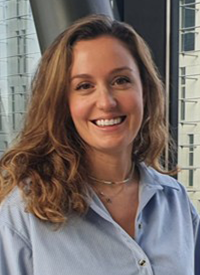HECTOR Deep Learning Model Shows Predictability for Distant Recurrence Risk in Endometrial Cancer
A deep learning risk prediction model was able to accurately identify patients with endometrial cancer at low and high risk of distant recurrence, according to data presented during the 2023 AACR Annual Meeting.
Sarah Fremond, MSc

A deep learning risk prediction model was able to accurately identify patients with endometrial cancer at low- and high-risk of distant recurrence, according to data presented during the 2023 AACR Annual Meeting.1
Findings from the study showed that the model was able to identify 89 patients having a low risk, 175 having an intermediate risk, and 89 having a high risk of distant recurrence out of a dataset of patients that was not used to train the model (n = 353). Subsequently, 3.37%, 15.43%, and 36%, of patients categorized by the model as being low, intermediate, and high risk of recurrence, respectively, actually experienced a distant recurrence.
“Endometrial cancer is the most common gynecological cancer, and the primary treatment is surgery,” Sarah Fremond, a PhD candidate in the Department of Pathology at Leiden University Medical Center in The Netherlands, said in a presentation of the data. “Most patients have a good prognosis and do not require any adjuvant treatment. [However], there is a proportion who will develop distant recurrence and for those, you want to recommend adjuvant chemotherapy. This is the only treatment in the adjuvant setting known to lower the risk of distant recurrence, but it also causes morbidity. [We wanted to know how to] accurately identify patients at low and high risk of distant recurrence to reduce under and overtreatment.”
Investigators created the artificial intelligence model using long-term follow-up data from patients with endometrial cancer who had not previously received adjuvant chemotherapy enrolled in the PORTEC-1/-2/-3 clinical trials and as well as those in 3 separate clinical cohorts (N = 1761). The model, named HECTOR by study authors (Histopathology-based; Endometrial; Cancer; Tailored treatment and distant recurrence; Outcome; Risk prediction deep learning model), used a single histopathologic slide from each of the 1408 individual patients to train and optimize itself. HECTOR is a collaborative effort between the AIRMEC Consortium and the TransPORTEC Consortium.
The dataset had a median follow-up of 8.45 years. Patients with stage IV disease and those who had previously received chemotherapy were excluded from the model.
Fremond noted that prognostic factors currently being considered, such as histological type and grade, stage, and molecular class, have challenges when trying to be assessed correctly. Challenges include variability, limited use of visual information in tumor slides, costs, turn aroundturnaround time, and interpretation. Thus, it is currently very difficult to combine all of these data to specifically target risk of distant recurrence, she said. In response, investigators created HECTOR to predict risk of distant recurrence using routine data.
“HECTOR is using only 2 types of input data: H & E tumor slide and stage,” Fremond said. “We then integrate the molecular class information of endometrial cancer without the need for molecular testing because we use the H & E-based molecular class from a previously published model. In the end, HECTOR combines [information from] the H & E- based molecular class, the pure morphological information from the tumor slide, and the stage category to predict distant recurrence-free survival.”
To compare the performance of HECTOR, investigators used a Cox’ Proportional Hazards model. HistotType, grade, lymphovascular space invasion (LVSI), and stage information inputted into the Cox model achieved a concordance-index of 0.723+ 0.045 on 5-fold cross validation and 0.771 on the unseen test set (n = 353). Another Baseline Cox model that added molecular class information to type, grade, LVSI, and stage, achieved a concordance-index of 0.736 + 0.033 on 5-fold cross validation and 0.778 on the unseen test set.
Comparatively, HECTOR, which included input from just one H & E slide and stage information, displayed a concordance-index of 0.795 + 0.031 on 5-fold cross validation and 0.788 on the unseen test set.
Additional findings showed the 10-year distant recurrence-free survival probability was the highest among patients who were determined by HECTOR to have a low-risk of distant recurrence (n = 81), at 0.98. The 10-year distant recurrence-free survival probabilities in the HECTOR-identified intermediate- (n = 176) and high-risk (n = 96) groups were 0.88 and 0.58, respectively.
“HECTOR accurately identified endometrial cancer patients at low and high risk of distant recurrence,” Fremond said. “It also outperformed Cox models with histopathological and molecular variables. [HECTOR] can be put into a standard workflow using only H & E tumor slides and stage [information].”’
Study limitations include its retrospective design, not having larger, external validation to assess the model’s generalizability across the various patient populations, and the lack of clarity between tissue scanning and slide preparation protocol differences and how these contrasts affect the model’s performance.
Dr Fremond cited no financial disclosures.
Reference
Fremond S, Adani S, Wolf JB, et al. Deep learning risk prediction model of distant recurrence from H&E endometrial cancer slides. Presented at: 2023 AACR Annual Meeting; April 14-19, 2023; Orlando, FL. Abstract 5695.



